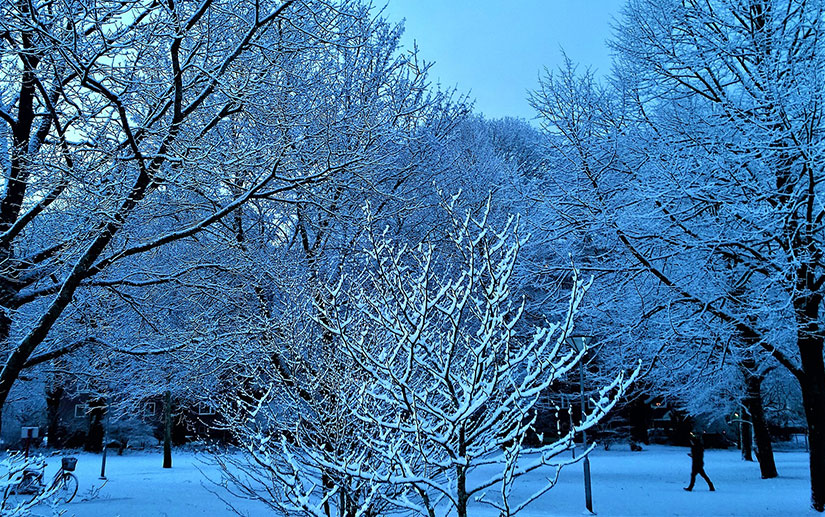You may read the title of this article and laugh at the thought of winter in the Carolinas – especially when it’s the mid-fall and still 86 degrees outside! However, the Carolinas are not immune to winter weather as evidenced by the multiple snowstorms that hit in the last few years. Making your fire station winter ready can prevent expensive damage, increase your station’s energy efficiency and prepare the facility when winter weather hits.
Waterproof the building
Many problems created by severe winter weather are due to water freezing. While people often think of their pipes freezing, water infiltration can cause problems as well. Small cracks in stucco or brick mortar; missing or failing caulk at roof and wall penetrations such as vents, windows, and roof curbs; and rusted building components such as flashing, coping, or lintels can all be vulnerable to the expansion of water as it freezes. Freezing water has the potential to make a small issue bigger and increase the risk of infiltration into your station if left alone. In some cases, especially when it comes to roofs, water can get between building layers and cause systems to fail.
Now is the perfect time to inspect the exterior of your building and identify these easy-to-fix maintenance issues. Painting rusted building components and recaulking penetrations and cracks can be done with materials from a local hardware store.
Be sure to check for signs of ponding water when inspecting your roof. If found, find and repair the source of the water. Some repairs are quick and easy, like clogged roof drains or improperly piped HVAC condensate lines, while others may demand the help of a roofing contractor. Ponded water can turn into ice dams during freezing temperatures, creating further buildup. Ice dams increase the risk of water infiltration and can present a safety concern from the formation of icicles.
Speaking of freezing pipes, as you are inspecting the outside of your building, be sure to disconnect any hoses from exterior spigots and drain or insulate any water lines or exposed pipes that are not buried below the frost line. If you use irrigation pumps, they should be disconnected and drained as well.
Create a plan for snow and ice
As winter approaches and temperatures drop, it is essential to have a game plan on how to manage ice and snow. De-icing and snow removal tools should be on hand for quick action to keep drives and sidewalks safe and clear. When it comes to de-icers, avoid rock salt at all cost and make sure the agent is safe to use on concrete. Some substances can be corrosive and damage concrete. We recommend using sand instead of a de-icer. If you do experience heavy snowfall, look for excessive snow buildup on your roof that could lead to structural problems with the roof’s support system. Have a plan to safely remove snow buildup if it occurs.
Finally, be sure to perform recommended periodic maintenance on your building’s mechanical system and backup/emergency generators. HVAC service is generally recommended twice a year, with one servicing in advance of cold weather. Generator maintenance schedules vary based on the type and size of the system. While conducting generator maintenance, always check to be sure the generator is connected to the appropriate systems as intended.
Commercial building maintenance
It is vital to the longevity of your building to perform proactive inspection and maintenance. Under an annual service agreement, our building maintenance team conducts periodic inspections of your entire building exterior. Scheduled maintenance will stabilize your operating budget, reduce costly unexpected repairs and extend the life of your facility. Read more about Bobbitt Service Solutions here.


